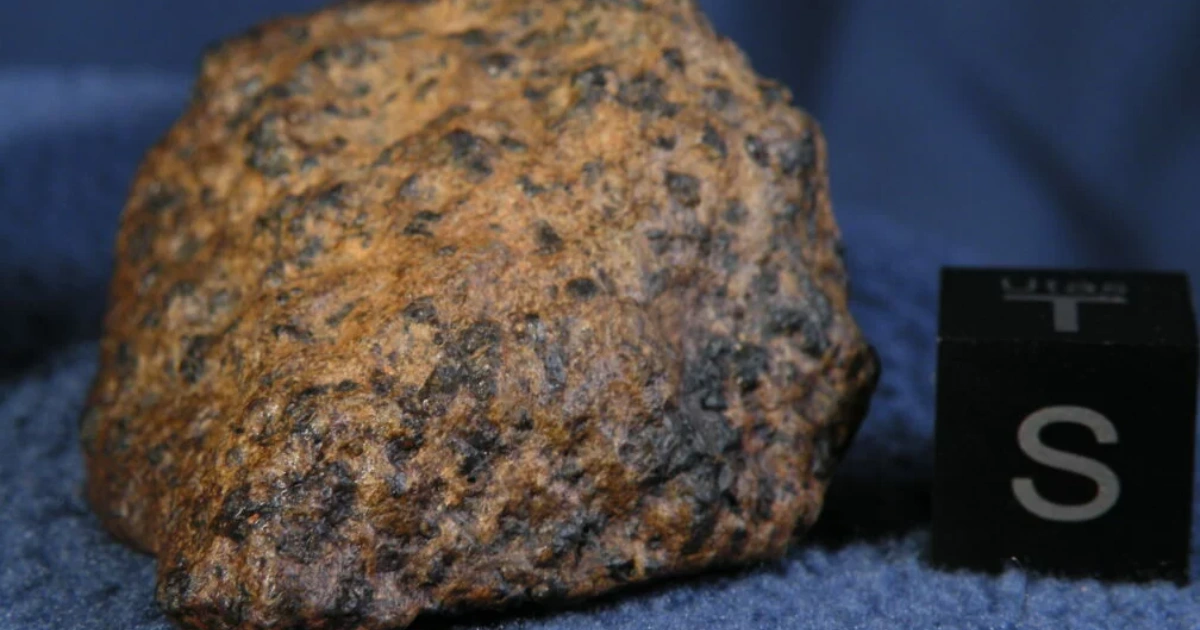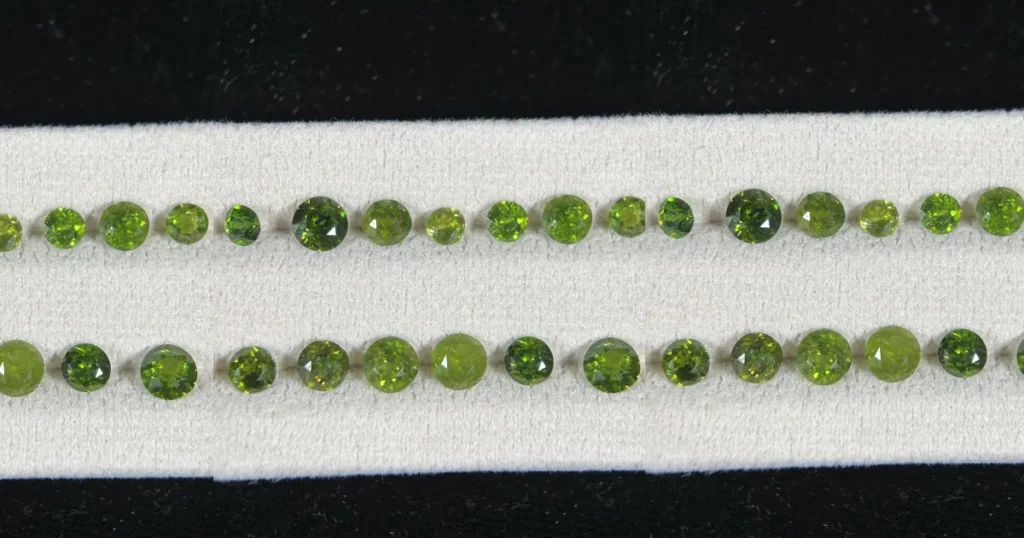Meteorites, acting as cosmic ambassadors, are invaluable material remnants from beyond Earth that fall to our planet after undergoing a long and perilous journey through interplanetary space. These extraterrestrial objects, predominantly originating from the asteroid belt but also potentially remnants of comets or even fragments of other planets within our solar system, have captivated human imagination for centuries.
But beyond their historical and cultural fascination, meteorites are unparalleled time capsules, preserving vital firsthand evidence about the initial conditions of the solar nebula, the processes of accretion and planetary differentiation, and the history of cosmic impacts.
Precisely understanding how these celestial bodies formed, from their detachment from their parent bodies to traversing orbital paths and undergoing fiery entry into Earth’s atmosphere, is fundamental to unlocking the secrets of our solar system’s formation and evolution.
This article undertakes a scientific dissection of the complex process behind the genesis of meteorites, tracing their evolutionary path from cosmic origin to their landing upon Earth’s surface.
Also, if you are looking to buy Demantoid, you can visit the Demantoid page.

The Origins of Meteorites
Meteorites represent tangible pieces derived from various celestial bodies throughout our solar system, predominantly originating from asteroids and comets, with a smaller fraction coming from the Moon and Mars.
These parent bodies are direct relics from the tumultuous early solar system, condensing and accreting within the vast, rotating protoplanetary disk of gas and dust that enveloped the young Sun approximately 4.6 billion years ago.
Within this primordial disk, dust grains collided and grew, forming planetesimals – the kilometer-scale building blocks of planets, asteroids, and comets. Through further accretion and differentiation, these planetesimals evolved into the diverse parent bodies we see today.
The actual meteorites that reach Earth are fragments liberated from these parent bodies. This liberation commonly occurs through high-energy collisions between asteroids in the main belt, or via impact events on the surfaces of the Moon or Mars that eject material with sufficient velocity to escape their gravitational pull.
These freed fragments, now termed meteoroids, then embark on trajectories through interplanetary space, some of which ultimately intersect Earth’s path.
Also, if you are looking to buy Jewellery, you can visit the Jewellery page.

The Role of Asteroids
Asteroids serve as the dominant reservoir for the meteorites that ultimately land on Earth. These diverse rocky and metallic bodies primarily inhabit the main asteroid belt situated between the orbits of Mars and Jupiter, ranging in size from less than a meter to vast protoplanet-sized objects hundreds of kilometers across. Over billions of years, this region has experienced countless high-energy collisions.
These impacts fracture and break apart larger asteroids, liberating myriad fragments. The gravitational influence of giant planets, especially Jupiter, significantly perturbs the orbits of these fragments, potentially flinging them out of the asteroid belt and onto paths that cross the inner solar system.
Once on such an Earth-crossing trajectory, these liberated fragments are classified as meteoroids, beginning the final stage of their journey towards potential atmospheric entry.
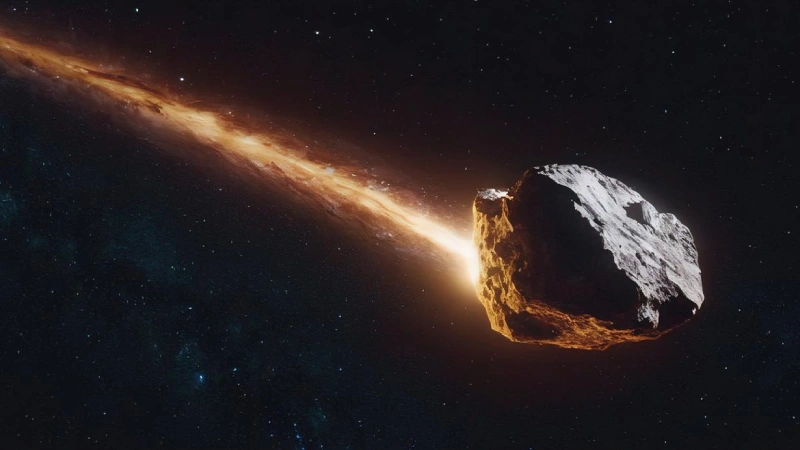
From Meteoroids to Meteorites
The fragments discussed in previous sections, when free-flying rocky or metallic bodies traversing space, are termed meteoroids. Their journey towards potentially becoming a meteorite culminates when their trajectory intersects Earth’s path and they are captured by our planet’s gravitational influence.
Upon entering the dense upper atmosphere at immense velocities (typically tens of kilometers per second), a meteoroid undergoes rapid and exceptionally intense heating. This phenomenon is primarily caused by the strong compression of air ahead of the object, alongside significant atmospheric friction.
The surface material melts and vaporizes under these extreme conditions (a process known as ablation), releasing substantial energy and forming a glowing trail of superheated gas and melted particles – the phenomenon we observe as a meteor, or “shooting star.”
While the vast majority of meteoroids are completely consumed and disintegrate during this fiery atmospheric passage (their intense deceleration acting as a natural thermal shield for the core), some larger, denser, or more robust fragments survive the ordeal. These surviving solid remnants that successfully pass through the atmosphere and reach the Earth’s surface are officially classified as meteorites, serving as carriers of valuable material from the cosmos to our planet.
Also read : Types of Agate: A Comprehensive Guide
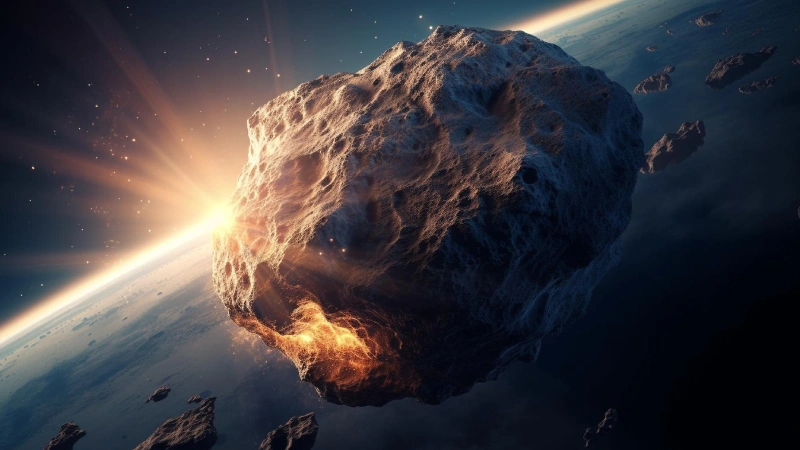
Types of Meteorites
Meteorites are primarily classified into three major categories based on their bulk composition, which directly reflects their origin and the processes they underwent within their parent bodies: stony meteorites, iron meteorites, and stony-iron meteorites. This classification scheme provides a crucial window into the processes of differentiation and evolution within the early solar system bodies.
Stony Meteorites: Constituting over 90% of all observed meteorite falls, stony meteorites are predominantly composed of silicate minerals, similar to terrestrial rocks. They are crucially divided into two main classes that represent fundamentally different formation histories:
- Chondrites: These are the most primitive, abundant, and undifferentiated type of meteorite. They formed by the direct accretion of dust and grains in the primordial solar nebula without significant melting or physico-chemical alteration. Their defining feature is the presence of chondrules – small, spherical or ellipsoidal former melt droplets that cooled rapidly and represent some of the oldest solid materials in the solar system. Chondrites hold key information about the physical and chemical conditions during the time of planet formation.
- Achondrites: In contrast to chondrites, achondrites lack chondrules and show clear evidence of melting, recrystallization, and igneous processing. They originated from the crusts or mantles of differentiated parent bodies (including larger asteroids, the Moon, and Mars) that underwent internal geological activity, akin to terrestrial volcanism or plutonism.
Iron Meteorites: Representing about 5% of meteorite falls, iron meteorites are composed mainly of iron-nickel alloys. They are believed to have originated from the metallic cores of differentiated parent bodies that were later fragmented by collisions.
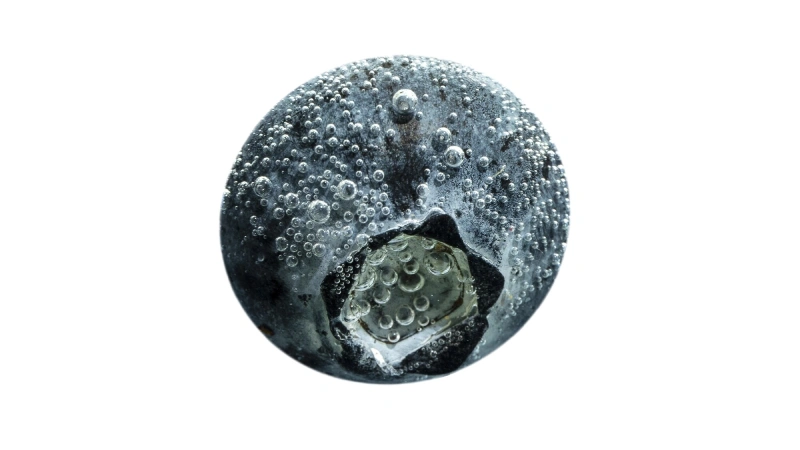
When cut, polished, and etched, most iron meteorites display characteristic crystalline patterns known as Widmanstätten patterns, unique to the extremely slow cooling (a few degrees Celsius per million years) of iron-nickel alloy deep within an asteroid core. They provide invaluable insights into the processes of core formation and the thermal histories of planetary bodies.
Stony-Iron Meteorites: The rarest of the main categories, making up only about 1% of falls, stony-iron meteorites contain a mixture of silicate minerals and iron-nickel metal in roughly equal proportions. They are thought to have formed at the crucial interface zone between the metallic core and the silicate mantle of differentiated parent bodies.
The two primary types are Pallasites, featuring large, often gem-quality olivine crystals embedded in a continuous metallic matrix, and Mesosiderites, which are brecciated mixtures of angular rock fragments (primarily pyroxene and plagioclase) and metal. These visually striking and rare meteorites offer important information about the internal structure and impact history of their parent bodies.
The Journey Through Space
Meteorites undergo a long and complex journey before they reach Earth. This journey can be divided into several stages:
- Ejection: The initial step in a meteorite’s journey is its ejection from its parent body. This can occur due to collisions with other celestial bodies or through volcanic activity on a planet or moon.
- Travel Through Space: Once ejected, the meteoroid travels through space. This phase can last for millions or even billions of years. During this time, the meteoroid may undergo various processes such as cosmic ray exposure, which can alter its chemical and isotopic composition.
- Entry into Earth’s Atmosphere: When the meteoroid enters Earth’s atmosphere, it experiences intense frictional heating. This causes the outer layers to vaporize and creates the bright trail of light known as a meteor.
- Impact on Earth: If the meteoroid is large enough to survive the passage through the atmosphere, it lands on Earth’s surface as a meteorite. The impact can create craters and may result in significant geological and environmental changes.
Also, if you are looking to find a meteorite and want to identify it, see the article Meteorite Identification.
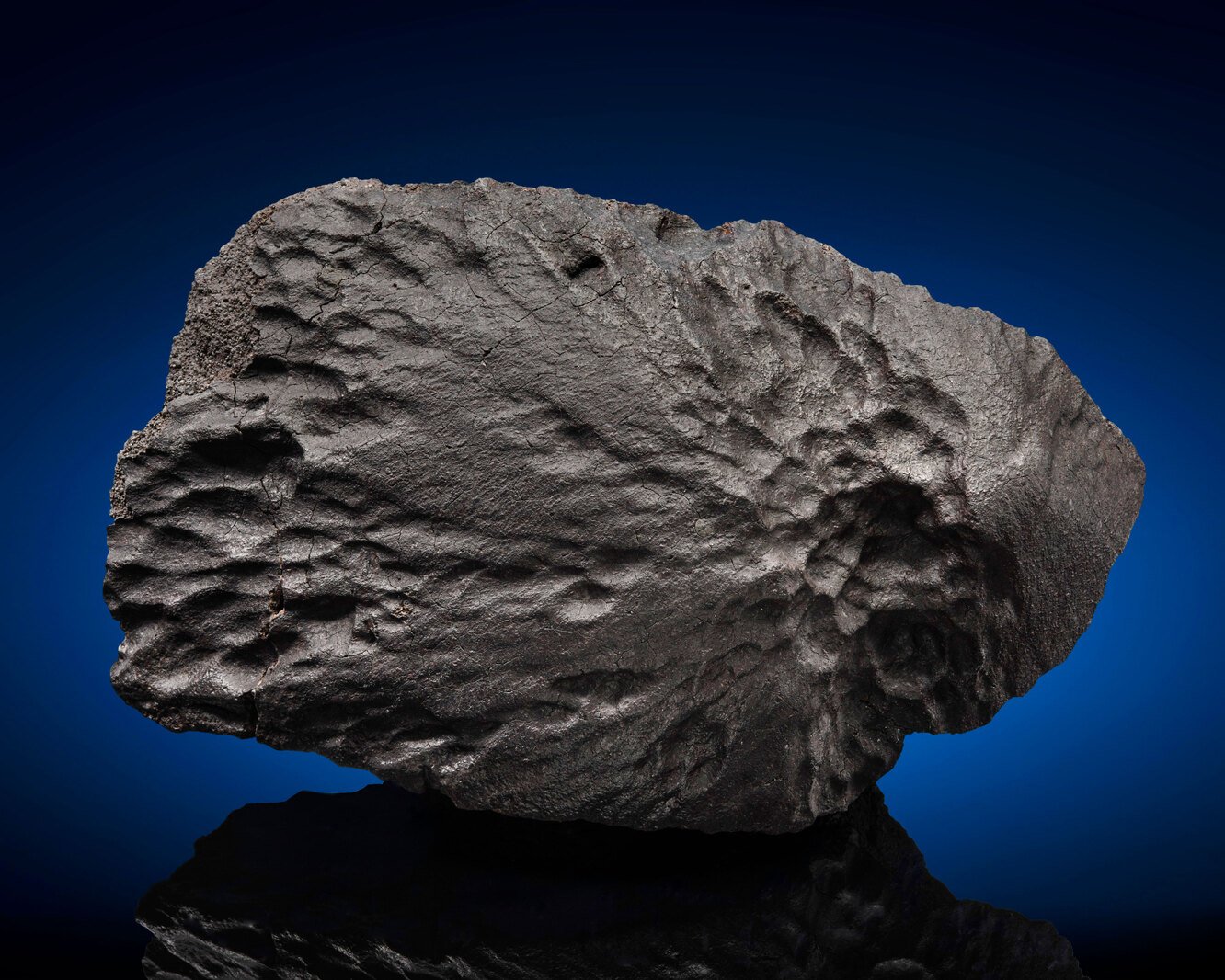
Scientific Significance of Meteorites
Meteorites hold unparalleled scientific value as they represent our most accessible source of direct, tangible samples from celestial bodies beyond Earth.
Their study offers fundamental insights into the formation, evolution, and composition of our solar system, providing clues that are often unattainable through remote astronomical observation alone. Key areas of research illuminated by meteorites include:
- Early Solar System Conditions and Formation: Undifferentiated meteorites, particularly chondrites, contain materials that preserve records from the earliest moments of the solar system. The study of chondrules reveals conditions within the solar nebula (temperature, pressure, composition), while rare pre-solar grains embedded within some chondrites are actual samples from stars that existed before our Sun, providing unique data on stellar and galactic processes preceding solar system formation.
- Planetary Differentiation and Internal Structure: Iron, stony-iron, and achondrite meteorites originate from differentiated parent bodies (asteroids, Moon, Mars). Analysis of their mineralogy, texture, and isotopic composition allows scientists to reconstruct the processes by which these bodies separated into metallic cores, silicate mantles, and crusts. This provides critical information for understanding the internal structure and thermal/igneary evolution of rocky planets and asteroids, including Earth.
- Astrobiology and the Delivery of Organic Molecules: Certain types of meteorites, most notably carbonaceous chondrites, contain a wealth of complex organic compounds, including amino acids, sugars, and nucleobases – fundamental building blocks of life as we know it. The presence of these extraterrestrial organic molecules suggests that the chemical precursors for life were available in the early solar system and could have been delivered to early Earth via meteorite impacts, potentially playing a role in abiogenesis.
- Cosmic Ray Exposure and Chronology: While traveling through space, meteoroids are bombarded by cosmic rays. This interaction produces specific isotopes (cosmogenic nuclides) within the meteorite material. By measuring the abundance of these isotopes, scientists can determine the meteorite’s space exposure age (how long it traveled as a small body since being ejected from its parent body) and its terrestrial age (how long it has been on Earth since falling). These ages provide crucial data on orbital dynamics, the flux of meteoroids in the inner solar system, and biases in meteorite recovery.
- Impact Processes: Meteorites themselves are products of impact events (on parent bodies), and their study provides insights into impact physics at various scales. The shock features observed in some meteorites record the conditions of the impacts that liberated them.
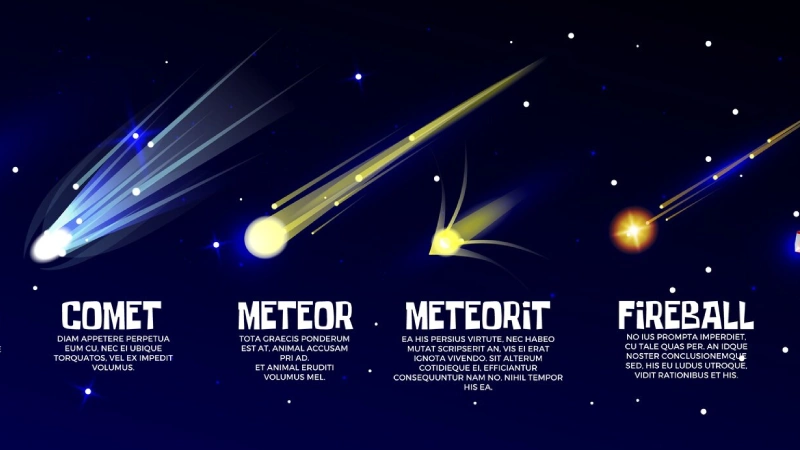
Famous Meteorites and Their Impact
Throughout history, several notable meteorites have been discovered, each with its own story and scientific significance:
- The Hoba Meteorite: Discovered in Namibia, the Hoba meteorite is the largest known intact meteorite, weighing approximately 60 tons. It is an iron meteorite and has provided valuable information about the composition of iron meteorites.
- The Allende Meteorite: This carbonaceous chondrite fell in Mexico in 1969 and is one of the most studied meteorites. It contains high levels of presolar grains, offering insights into the materials that existed before the formation of the solar system.
- The Chelyabinsk Meteorite: In 2013, a large meteoroid exploded over Chelyabinsk, Russia, causing significant damage and injuries. The fragments recovered have provided data on the strength and composition of meteoroids entering Earth’s atmosphere.
Conclusion
Understanding how meteorites are formed is a fundamental aspect of planetary science and astronomy. These celestial visitors offer a unique window into the early solar system, the processes of planetary formation, and the potential for life beyond Earth. As technology and research methods advance, scientists continue to uncover new information about meteorite formation and their journeys through space. Each meteorite that lands on Earth brings with it a wealth of knowledge, contributing to our ever-expanding understanding of the cosmos.
FAQs
What are the main types of meteorites?
Meteorites are primarily classified into three types: stony meteorites (including chondrites and achondrites), iron meteorites, and stony-iron meteorites.
How do meteorites provide insights into the early solar system?
Meteorites contain ancient materials that predate the formation of planets, offering scientists clues about the conditions and processes in the early solar system.


